When can the enduring origin of the lute be traced back?
I still remember that at the beginning of the TV series "Twelve Hours in Chang'an", on the streets of Chang'an, there was a pavilion, and a woman with red makeup was sitting against the window, holding the four-stringed pipa horizontally, plucking the strings with her hands, and the reverberation lingering around the beam for a long time.
As soon as the camera turned, in the corner of the restaurant, everyone was listening to a little song, the pipa, Ruan, and harp, each paused for a while, and the sound was incessant.
In the warm and unrestrained Tang Dynasty, the entertainment industry was in full swing, and in the music circle, the pipa can be said to play a pivotal role. It has become the highlight of ancient Chinese music performances with its delicate and melodious timbre and powerful scales.
Noisily cut the miscellaneous bullets, big beads and small beads fell on the jade plate.
The silver bottle burst into water, and the iron cavalry protruded and shot.
Bai Juyi's "Pipa Xing" even made this plucked stringed musical instrument on the altar. For thousands of years, it has made people fascinated.
The same "Pipa Xing" also seems to reveal the rise and fall of the pipa.
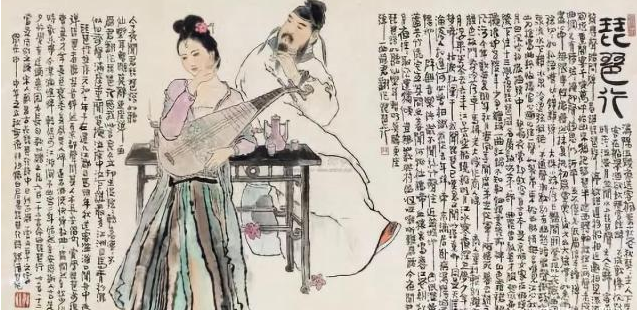
In the eleventh year of Tang Xianzong's Yuanhe period, the Tang Dynasty had been in existence for nearly 200 years. After the reign of Zhenguan, Empress Wu and the Tang Dynasty in the Zhou Dynasty, the prosperous age of Kaiyuan and the Anshi Rebellion, it has turned from prosperity to decline.
The pipa girl at the head of the Xunyang River has also changed from "the first part of the school" to "the pommel horse in front of the door". The fate of pipa rice seems to be closely followed by the Tang Dynasty.
For thousands of years, as a traditional musical instrument, the pipa has encountered the exclusion of the orthodox elegant music represented by the guqin, and eliminated the weak species in its own family, but it cannot stop it from entering the orthodox from the frontier. It is firmly rooted in the musical lineage of the Han nationality, with luxuriant branches and leaves and endless voices.
Qin and Han Dynasties: The local "Pipa" was first recorded as "Bi Pa"
Regarding the origin of the pipa, it can be traced back to the Qin Dynasty. Fu Xuan, a writer of the Wei and Jin Dynasties, recorded the rumors about the production of the pipa in his "Pipa Fu·Preface":
The Han sent Princess Wusun to marry Kunmi, and recited her longing for her Taoism, so that the confidantes of the workers cut qin, zheng, zhu, and konghou to make horse music.
At the same time, Du Zhi believed that the pipa came into being during the First Emperor’s construction of the Great Wall:
At the end of the Qin Dynasty, the battle of the Great Wall was built, and the people were slammed and drummed.
That is to say, in the Qin Dynasty, there were musical instruments similar to the pipa. At that time, there was a circular musical instrument with a long handle, called "Xian Tuo", because there were mainly two ways to play it: When it pops forward, it is called "Ba", and when it is lifted backward, it is called "Ba", so people call it "Baishi".
In the "Customs Tongyi" written by Ying Shao at the end of the Eastern Han Dynasty, it is recorded:
Approval of the handle, I would like to make it according to the recent Shile family, I don't know who, but I use the hand to appraise the handle, because of the name.
"Pedestrians fight against the wind and the sand is dark, and the princess pipa has many resentments." During the Han Dynasty, the daughter of Jiangdu King Liu Xijun, that is, Princess Wusun, wanted to take away a musical instrument before her marriage trip. , In order to adapt to playing music on horseback, the so-called "Qin Hanzi" and "Qin Pipa" were made in later generations with reference to instruments such as xiantuo and qinse.
So far, the local "Pipa" with the prototype of later generations of Pipa made its debut in history.
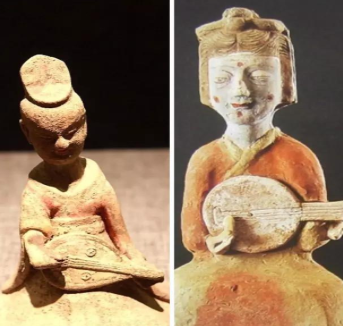
Wei and Jin Dynasties: Reforming Pipa, Integration under Cultural Exchange
During the Wei and Jin Dynasties, people changed the "Pipa" from "Pipa" on the basis of words such as "Qin Se". In that chaotic and chaotic era, culture and art developed rapidly.
At this time, the Qin Pipa had been carefully crafted, and he took the Jiatong in the north of Danze, cut three feet five inches each spring, Zhang Tussah silk with four strings, and carved them. After its improvement of speakers and strings, it has been passed down to this day and is called Ruan by later generations.
Since Zhang Qian was envoy to the Western Regions in the Western Han Dynasty, the "Silk Road" has become the main artery of cultural exchanges between China and foreign countries. With the massive migration of ethnic minorities in the northwest frontier, a burst of Hu music roared. The musicians in the Western Regions brought not only the Konghou and the four-stringed pipa, but also the Quxiang pipa, which was called "Hu Pipa" at that time.
The earliest record of Quxiang pipa in my country is the ancient murals in the Kizil area, the ancient capital of Qiuci, found in the northern foot of the Tianshan Mountains in the 3rd century AD. In the frescoes, there are both the Qin pipa with a round belly and a straight neck, as well as the four-column pipa with a curved neck, showing us a scene where the Qin Pipa and the curved pipa compete on the same stage.
Wang Sengqian of the Southern Dynasty recorded in the "Technical Records":
Empress Wei Wende Yashan Pipa. Emperor Ming tried to make music with the begging of his clothes. When Yang Fu was at his side, he asked the emperor, "Empress Dowager, your majesty's first-mother, is the royal ceremony wrong?" When he leaned on it, the emperor said to Fu: 'I know that the Qing is respectful of the festival, but since my heart is uneasy, I will now follow the Qing's words, so I can't see the people of Yi in the vast Xiang River?' The tone of this statement is wonderful.
It can be seen that in the Wei and Jin Dynasties, "Pipa" officially entered the court.
What's good on the top will be happy on the bottom. "Hu Pipa" became one of the most important musical instruments at that time.
During this period, Quxiang Pipa began to absorb the advantages of Qin Pipa and evolved into a multi-column direction.
In the end, after the efforts of several generations of musicians, they finally took advantage of their own strengths, combined with each other, borrowed from the pear-shaped big-bellied sound box of the Quxiang pipa, and increased the column position, creating a fusion of Chinese and Western cultures. The pipa has a multi-column composition. Since then, the pipa has firmly established the C position in the musical instrument industry.
During the Sui and Tang dynasties, it was widely spread with the spread of "Qiuci Music", which used Quxiang Pipa as the main musical instrument. These foreign music injected new blood into the Chinese music scene and had a great impact on Chinese music. The Sui and Tang Dynasties Yanle formed the peak of Chinese music development.
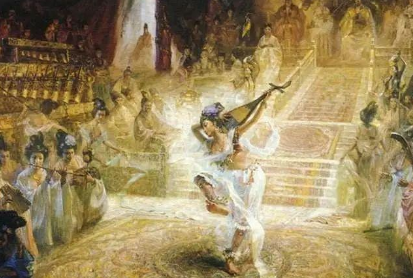
Sui and Tang Dynasties: Mature development, production and performance reached their peak
By the Tang Dynasty, the pipa had matured and reached its peak.
The popularity of the pipa in the Tang Dynasty can be seen from the wide distribution of its audience.
to the palace. Whenever there is dancing music in the palace, it is always inseparable from the figure of the pipa, which can be seen in the picture "Han Xizai Night Banquet". In addition, in order to better promote the development of music, Emperor Xuanzong added court music institutions such as Liyuan and Jiaofang to facilitate his own jurisdiction.
Down to the homes of ordinary people. Wang Jian said in "Liangzhou Xing": "Chicken in the city head croaks, and every family in Luoyang learns Hu music", which shows that Hu music has become a common practice among the common people. The pipa, as the representative of the Hu musical instrument, has already penetrated into the masses.
as far as the frontier barracks. Wang Han's "Luminous cup of grapes and wine, I want to drink the pipa immediately. Drunk on the battlefield, Lord Grim, a few people from ancient times have returned to the war", and Cen Shen's "The Chinese army set a drink to return guests, Huqin, pipa and Qiang flute" can be regarded as evidence.
At that time, there were many musical instruments, and the pipa passed from Hu to Han. There are three reasons why the pipa can reach such a prosperous state:
First, there are a large number of high-quality pipa solos. If an instrument wants to be truly popular, its value should also be reflected in the solo performance.
During the Sui and Tang dynasties, the pipa had a wide variety of solo repertoires, which benefited from the pipa's extremely broad timbre characteristics.
Wenqu focuses on lyricism, or lament, or euphemism, or lingering; while Wuqu focuses on writing momentum, ups and downs, and magnificent. In Bai Juyi's "Pipa Xing", two famous songs, "Neon Clothes and Feather Clothes" and "Liu Yao", have been widely circulated in the Tang Dynasty.
Second, famous artists came out, and styles and genres flourished. A large number of pipa players and music emerged in the Tang Dynasty, such as Cao Bao, who lived in Chang'an in the Tang Dynasty, his son Cao Shancai, and his grandson Cao Gang. There are poems and praises, Cao Gang's performance, his right hand is strong and powerful, "plucking like wind and rain", and Pei Xingnu, who is equally famous, is delicate in pressing the strings with his left hand, "good at twisting", so there was a saying in the music world at that time "Cao Gang has a right hand, which is very exciting." Slaves have the reputation of being left-handed. Pei Shenfu, a famous "five-stringed" player from Shule in the Western Regions, was one of the most valued court musicians by Emperor Taizong of the Tang Dynasty. He pioneered the finger-playing method of pipa. After competing with Kang Kunlun Pipa, he entered the court and became a royal musician.
With masters, it will naturally gradually become a style and genre, followed by scholars, peach and plum all over the world, and soon a hundred flowers will bloom.
Pipa was originally divided into two schools, North and South, but later, the Northern School of Pipa became increasingly depressed, while the Southern School of Pipa made great strides forward. From the Southern School, there are four schools of Pudong, Pinghu, Wang School and Chongming. There are differences in performance skills, musical expression and good repertoire among the various schools, showing a situation of contention among a hundred schools of thought.
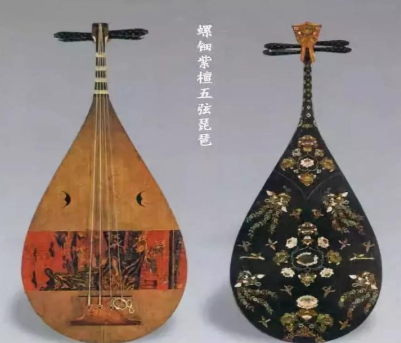
Third, the shape of musical instruments has become more and more elegant, which can be appreciated and collected. In addition to being used for performance, collecting and appreciating is also enough to confirm the prosperity of the pipa. Xuanzong himself kept a jade pipa privately and refused to show it to anyone except the top masters at the time. Yang Guifei also has her own collection out of print, which is called Yuhuan Pipa by later generations.
From an appliance to a work of art.
Song and Yuan Dynasties: Rich in shapes, Pipa became an accompaniment instrument
During the Song and Yuan dynasties, with the prosperity of urban culture, rap music became popular among the folk, and the independence of instrumental music gradually increased. Pipa, which has a very wide range, became the first choice, and went to the folk, becoming one of the main accompaniment instruments for rap music.
At the same time, the definition of various forms of pipa and "pipa" as a proper noun has also become more clear. Ma Duanlin made a clear description of various types of pipa in the "General Examination of Literature". "Yuan History Volume Seventy-one, Ritual and Music Records Twenty-third" contains:
The pipa is made of wood, with a curved head, a long neck, four rounds, a fringed neck, a broad face, four strings, and a face decorated with miscellaneous flowers.
Ming and Qing Dynasties: Stable, the second peak of Pipa development
In the Ming and Qing Dynasties, the pipa was widely used in folk instrumental ensembles. In the north, it was represented by thirteen sets of strings and cables. a development peak.
At this time, the shape of the pipa has stabilized and is very close to the modern one. In terms of playing method, fingerstyle completely replaced plectrum, and the transition from plectrum to fingerstyle in Song and Yuan Dynasties came to an end.
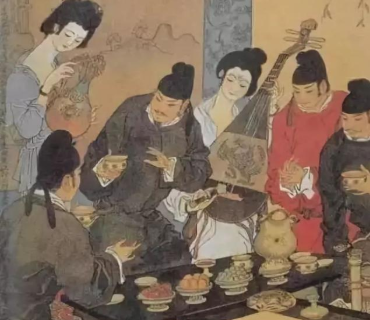
Looking back on the entire development and evolution of the pipa, it is not difficult to find that, as one of the carriers of culture and art, the fate of the pipa is always tied to the fate of the times, so looking back, the reason why the pipa can reach the peak of development in the Tang Dynasty is the Also obvious.
The Tang Dynasty was an unprecedented era. It was prosperous and it was declining. On the one hand, the free and unrestrained national style of the prosperous Kaiyuan period paved the way for the development of Pipa. On the other hand, the diversified cultural impact gave Pipa a powerful vitality.
First of all, Chang'an, the capital of the Tang Dynasty, was a place where ethnic minorities in the northwest were mixed, and the Li family of the Tang Emperor had more Hu people, so it outlined the temperament of the Tang Dynasty, which was open and closed, and the sea was open to all rivers. The cultural influx under the great integration of ethnic groups provides fertile soil for the prosperity of the pipa.
Second, there is a direct relationship with the monarch's preferences. Especially in the reign of Emperor Xuanzong, Hu Le, led by the pipa, was greatly promoted, and even Taichang Yayin in temples began to incorporate Husheng. If you have a hobby on the top, you must do it on the bottom.
After the Tang Dynasty, the Song and Ming dynasties, although the pipa was not uncommon, but because of the influence of Neo-Confucianism, Confucianism began to revive day by day, the national style became more conservative and reserved, and there was no more free and unrestrained style of the Tang Dynasty. It belongs to the orthodox voice, and it began to be excluded from all aspects.
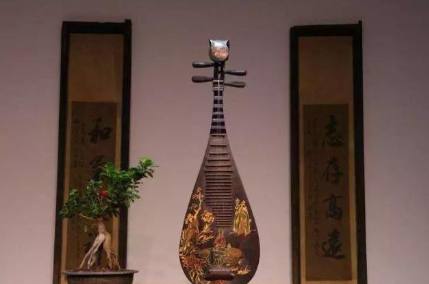
But even so, in today's increasingly splendid traditional Chinese culture, on the long scroll of thousands of years of history, the pipa still paints a rich and dazzling stroke with its unique artistic charm.
Pipa music is both elegant and vulgar, which can not only satisfy the pursuit of "neutral beauty" by literati and doctors, but also satisfy the pursuit of "rough and simple beauty" by the working masses. The role of ethical education is good music that can play the role of "deep love and civilization, vigorous and spiritual transformation, harmony in the accumulation and yinghua in the outside, only music can't be fake".
Today we will talk about the pipa again. In addition to the well-known "Pipa Xing", there is another "Pipa Fu", which is exquisitely described:
The plain hands are fluttering, and the sound is thinner than that of sorghum; the weak wrist suddenly competes for employment, like a shock of lightning; the flying slender fingers promote the pillar, and the creation is more sad; when the jing is pulled, it is cold, and the sound is cold. Shao Yao to arouse; Qi Fei Long's Secret Introduce Xi, to be wonderful in the Qing Dynasty; The mourn is knotted inside, the sinking air is withdrawn, the birthday is ups and downs, and the twists and turns.
 渝公网安备 50010702504639号
渝公网安备 50010702504639号